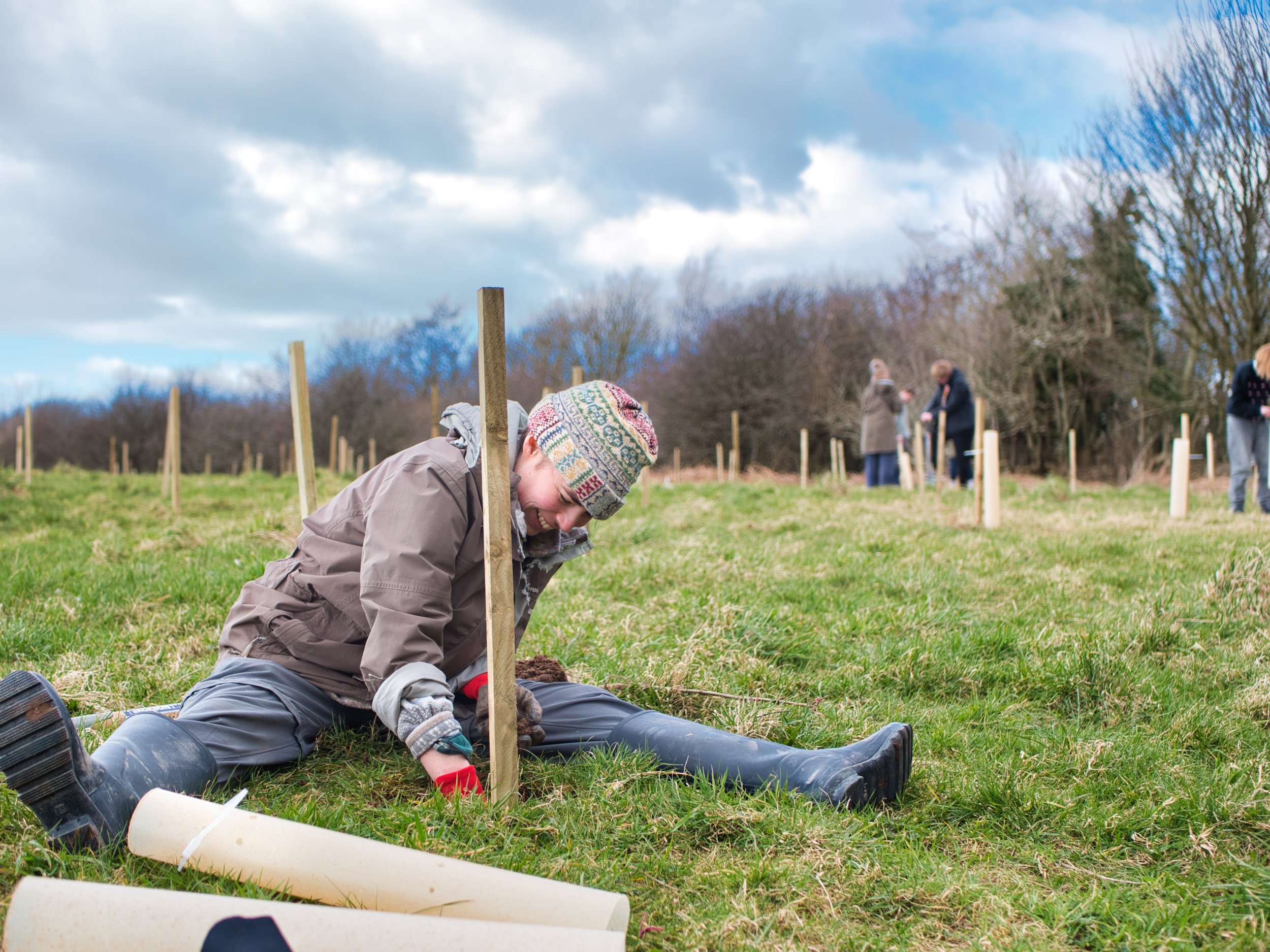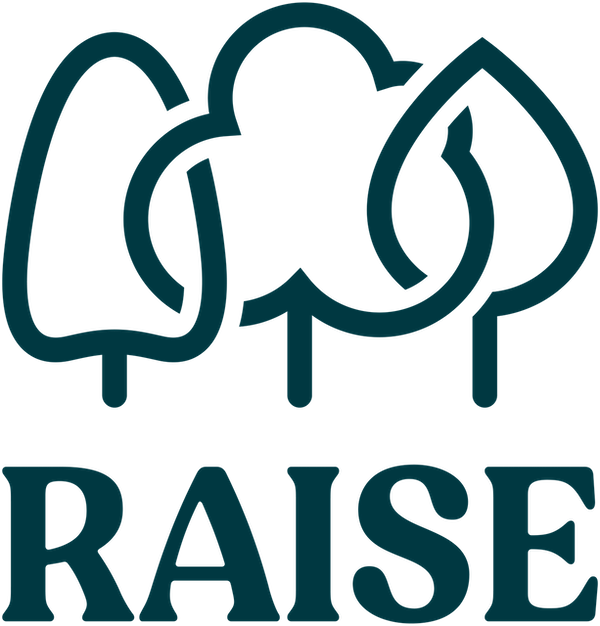How Tun

DATE:
2024 / 2025
LOCATION:
How Tun, Barrow-in-Furness
PARTNERS:
Autus, Full of Noises, Westmorland and Furness Council, Woodland Trust
Woodland creation with a neuro-affirming approach
Aims
Extend existing woodland surrounding the site to soften its edges and create additional woodland edge habitat.
Enhance recreational space while retaining key features such as paths and views and adding benches.
Create planting events and opportunities for neurodivergent groups in a neuro-affirming environment.
The project began as part of a portfolio of land brought to Raise by the Westmorland and Furness Council. As a popular site with the public, consultation was carefully thought out, and the community engaged through drop-in sessions at the supermarket, letter drops, and a session on site with the Raise Collective. (The Raise Collective is a group of stakeholders brought together to consider a site for woodland creation with perspectives not traditionally considered by woodland professionals. For this site, neurodivergent perspectives were considered alongside local artists, arts organisations, and residents).
This council-owned site is located on the outskirts of Barrow, adjacent to existing sports fields and facilities. It offers panoramic views over the town, Morecambe Bay, the Irish Sea, and, on a clear day, Blackpool Tower. The site is a well-used local green space, popular with dog walkers and leisure users. It is mostly surrounded by existing woodland of about 20 years in age and is managed by the Woodland Trust.
Prior to planting, the area consisted mainly of grassland with some small patches of scrub. The site presented an opportunity to extend the existing woodland naturally into the open grassy areas. By planting 250 trees across three designated areas, the project aimed to soften the woodland’s harder edges while maintaining an open, accessible feel.
The consultation process highlighted the importance of preserving views and maintaining clear pathways for the community. These considerations shaped the planting design, ensuring a balance between woodland expansion and the needs of site users.
The planting included a mix of 13 species including oak, birch, Scots pine, rowan, bird cherry, and spindle. Many of the species are fruiting and flowering, and different species from the existing woodland to enhance biodiversity and support bird and insect populations. This mix of species will enhance the existing woodland and allow those species to migrate outwards over time. The three areas of planting are positioned in two corners of the site and along one edge. This is then complemented by individual trees scattered around the site, near the blocks of planting.
An interesting thing is the connection between biodiverse spaces and industrial heritage, which connects people, place, and the environment.
TThe How Tun project provided Raise with an opportunity to collaborate with Autus and Full of Noises to create planting events and engagement initiatives using a neuroaffirming approach. Autus is a Cumbrian organisation supporting autistic children and adults through social opportunities, support, training, and advocacy. Full of Noises is a sound art and new music organisation based in Barrow.
By partnering with these groups, Raise was able to host planting and engagement events that prioritized accessibility for neurodivergent individuals. The planting day was designed to be inclusive and flexible, offering a supportive environment for participants to engage in a way that was supportive to them.
Raise is committed to understanding the diverse public benefits of trees by working with different groups and recognizing people’s varied relationships with woodland spaces. As a neurodivergent-led organisation, Raise actively involves and celebrates neurodivergent participants and partners.
Over an eight-month period, Raise worked with Autus to develop a deeper understanding of how to make woodlands more accessible. This project has helped identify barriers that neurodivergent individuals may face when engaging with woodland spaces, whether sensory-related, historical, or logistical.
The planting event included a mix of local community members, Autus participants, and Full of Noises contributors. In addition to tree planting, activities were set up in the woodland for those who wanted to spend time in the existing woodland.
This project represents a milestone in implementing accessible woodland creation. The knowledge gained serves as a blueprint for future initiatives that aim to create neuro-affirming woodland spaces and engagement events.
11
Volunteers
250
Number of trees
0.83
Hectares of woodland planted
Project Impact
Contribution to Net Zero:
0.83 hectares planted with 250 trees contribute to carbon sequestration and storage.
Public Access and Community Engagement:
The space is enhanced with additional trees, softening the edges of the woodland while maintaining open views across the bay and to the industrial heritage of the town.
The local community and Autus participants were involved from an early stage, actively shaping the project.
Raise specifically designed the engagement opportunities to be a neuro-affirming space, addressing the needs of neurodivergent participants.
Launch event to celebrate the completion of the planting.
Innovation:
By partnering with Autus and Full of Noises, Raise has adopted a fresh approach to increasing participation among neurodivergent groups.
Health and Wellbeing:
The project fosters greater connections to green spaces by creating neuro-affirming environments for people to explore and enjoy.
It reduces barriers to woodland access by allowing individuals to engage with the space on their own terms.
Education and Skills:
Volunteers gained hands-on experience in tree planting and developed a deeper understanding of the site and its existing woodland.
Participants engaged with Full of Noises, learning how sound can be used to interact with nature and develop a stronger connection to the environment.
Nature and Biodiversity:
Expanding the existing woodland increases habitat diversity and introduces different tree ages.
New woodland edge habitat gives more diverse habitats and species mix, creating an ecotone between the grass and established woodland.




